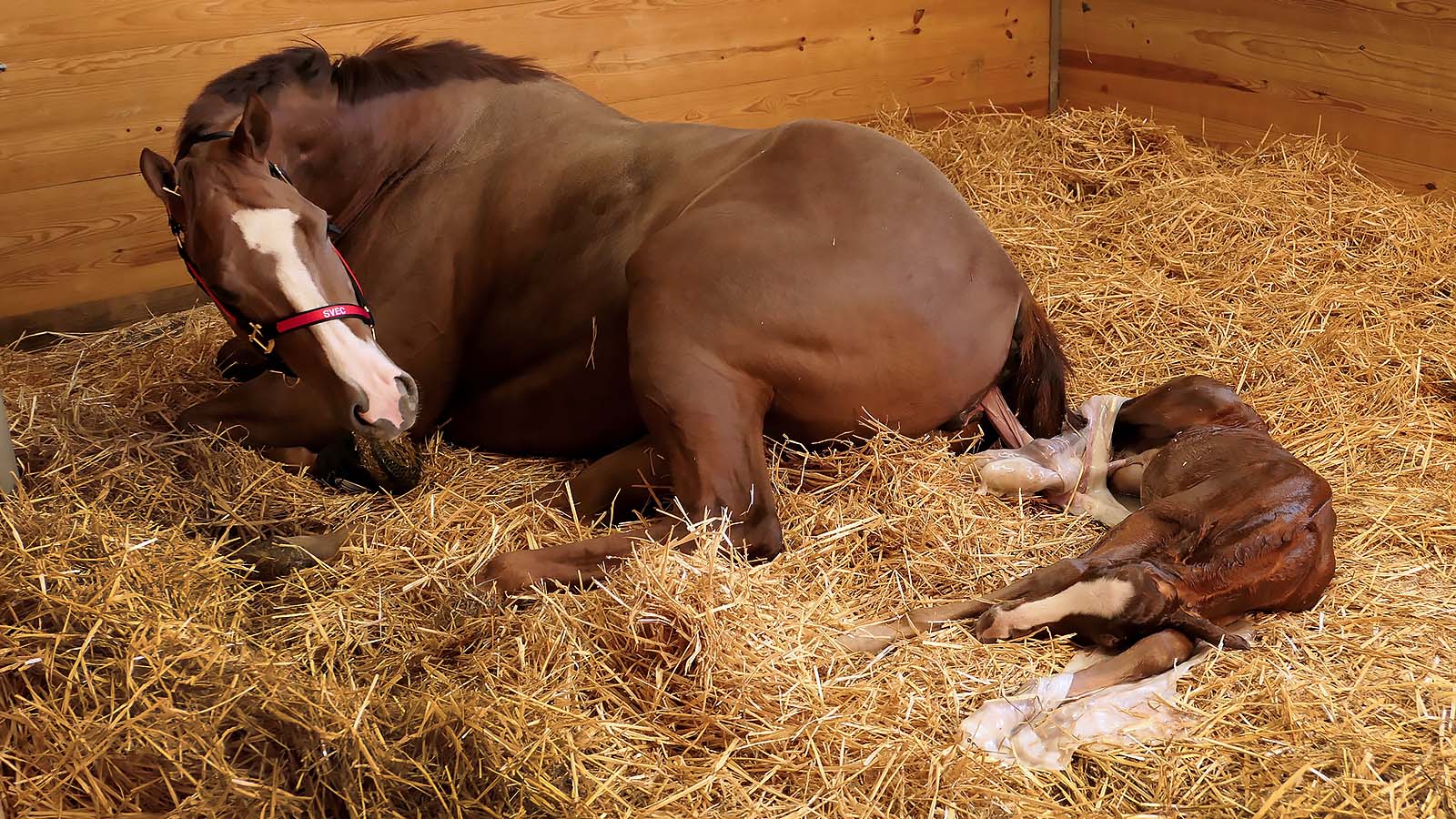Breeding season preparedness begins early. Mares require 16 hours of continuous light for 60 days before they begin to cycle regularly. The mare is a seasonally polyestrus animal which means she undergoes regular heat cycles for a portion of the year (spring and summer). In nature, a mare will have her first heat cycle in the spring, which may differ from the desired breeding time for show mares. We can induce a mare to cycle earlier in the year by increasing the number of hours her retinas are exposed to light. Mares need to be provided 16 hours of continuous light 60-75 days prior to the start of the breeding season, also known as “putting them under lights”. Daylight provides the necessary amount of light, so turnout is appropriate during the day with ancillary lighting after sunset. The best results are when the mares have added light at the end of the day between 5pm and 12am. It is important that the mare has an 8 hour period of darkness as well. The easiest way to do this is with the use of a timer. Additional lighting should be started 60 days before the aimed breeding date. The lights should be bright enough that a newspaper can be read in every corner of the stall and no open windows should be present that would allow a horse to stick her head out into darkness.
As part of the preparation for breeding, non-pregnant mares should be vaccinated with the core vaccines including Rabies, Eastern Encephalitis, Western Encephalitis, Tetanus, Influenza, Rhinopneumonitis, and West Nile Virus. A fecal evaluation should be performed for parasites to classify the mare’s shedding status and determine an appropriate deworming protocol during her pregnancy. A sedated dental examination and equilibration will ensure that the mare is in optimum health prior to being bred. Mares that are too thin or too fat have decreased conception rates. An ideal body condition score (BCS) is 5/9 for open mares and mares during the first 8 months of pregnancy.
After being bred, mares should be checked via transrectal ultrasound at 14-16 days of pregnancy to ensure no twins are present. If twins are seen, this is the best point at which to reduce the pregnancy to a singleton. The chances of a mare successfully carrying both twins to full term are nearly impossible. An additional evaluation at 25-45 days will help ensure that the pregnancy is progressing normally in terms of heartbeat development and growth. Mares should be vaccinated against rhinopneumonitis at 5, 7, and 9 months of pregnancy to reduce the chances of abortion due to EHV-1 infection. Pre-foaling vaccinations are performed at month 10 of pregnancy to provide colostral antibodies to the foal once it is born.

